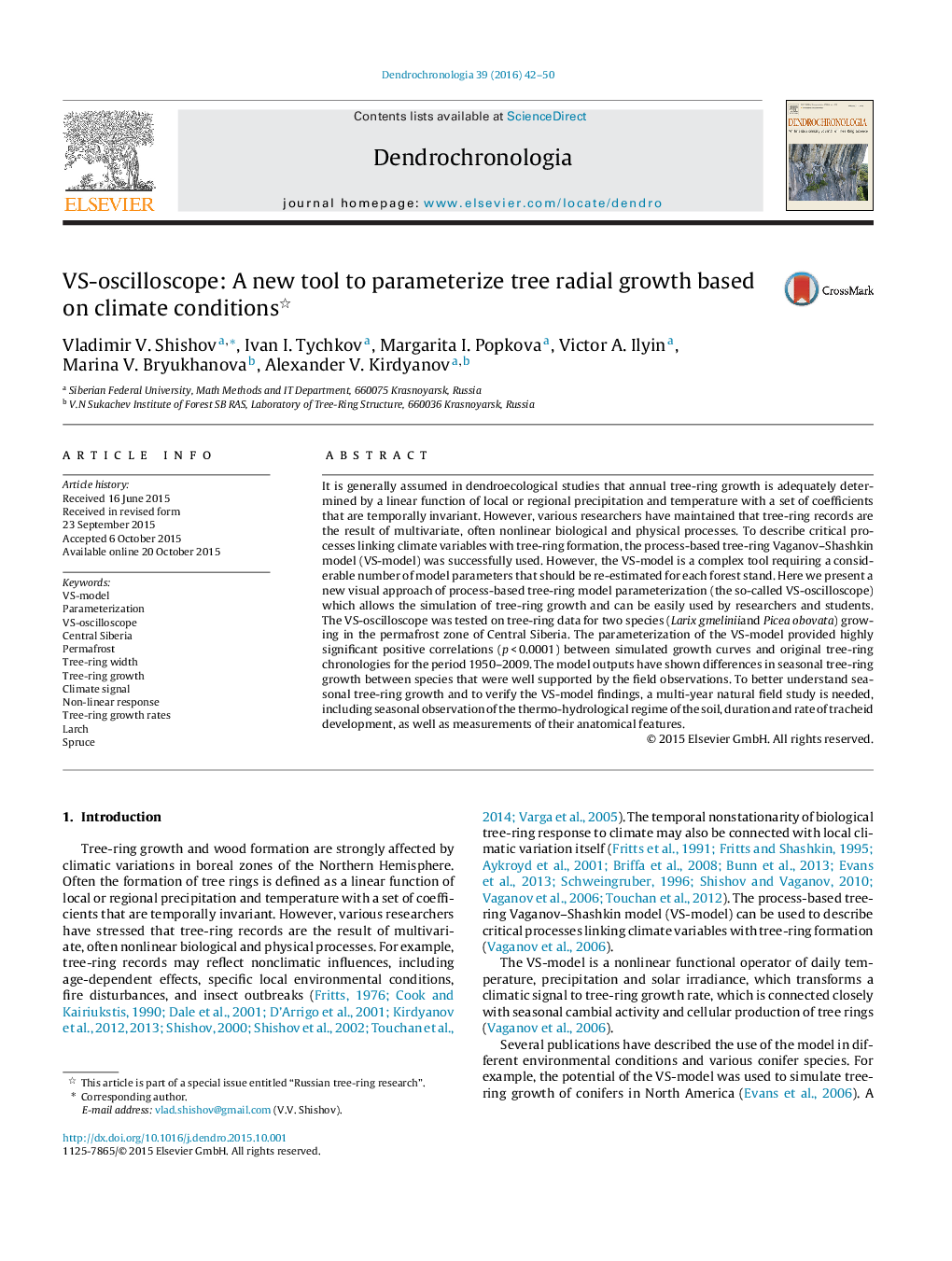| Article ID | Journal | Published Year | Pages | File Type |
|---|---|---|---|---|
| 85570 | Dendrochronologia | 2016 | 9 Pages |
It is generally assumed in dendroecological studies that annual tree-ring growth is adequately determined by a linear function of local or regional precipitation and temperature with a set of coefficients that are temporally invariant. However, various researchers have maintained that tree-ring records are the result of multivariate, often nonlinear biological and physical processes. To describe critical processes linking climate variables with tree-ring formation, the process-based tree-ring Vaganov–Shashkin model (VS-model) was successfully used. However, the VS-model is a complex tool requiring a considerable number of model parameters that should be re-estimated for each forest stand. Here we present a new visual approach of process-based tree-ring model parameterization (the so-called VS-oscilloscope) which allows the simulation of tree-ring growth and can be easily used by researchers and students. The VS-oscilloscope was tested on tree-ring data for two species (Larix gmeliniiand Picea obovata) growing in the permafrost zone of Central Siberia. The parameterization of the VS-model provided highly significant positive correlations (p < 0.0001) between simulated growth curves and original tree-ring chronologies for the period 1950–2009. The model outputs have shown differences in seasonal tree-ring growth between species that were well supported by the field observations. To better understand seasonal tree-ring growth and to verify the VS-model findings, a multi-year natural field study is needed, including seasonal observation of the thermo-hydrological regime of the soil, duration and rate of tracheid development, as well as measurements of their anatomical features.
